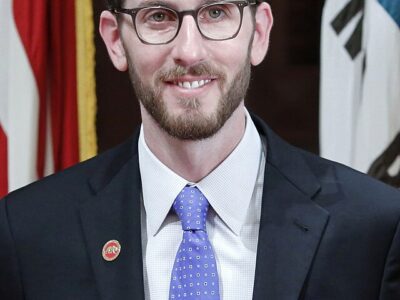Will Expanded Federal Transit Financing Result In More Toll Roads?
In a time of infrastructure needs and scaled-back public sector budgets, finding dollars for public transit projects can be a challenge. Transit advocates hit on a great formula, however, starting in Los Angeles with the “30/10” Plan. 30/10 would allow Los Angeles to build 30 years worth of sales tax-funded transit projects in 10 years, with the help of federal loans that would be paid back from the sales tax. The concept went national as many jurisdictions with local revenue streams realized they could do the same thing as Los Angeles. Even Republicans liked the idea, since it didn’t involve new spending per se but just leveraging the borrowing power of the federal government.
In response, Senator Barbara Boxer took the lead to expand the existing loan program, called TIFIA (Transportation Infrastructure Finance and Innovation Act), in the latest transportation funding bill. However, as the Huffington Post noted, in order to get Republican votes on her committee for the bill, Boxer dropped an eligibility criteria added by the Obama Administration that would prioritize projects that help protect the environment. As a result, transit advocates fear that non-environmentally beneficial projects with guaranteed revenue streams, namely toll roads, will be able to out-compete transit projects for funding under the program.
Enough TIFIA money should still be available for jurisdictions like Los Angeles, with its solid transit revenue program and list of projects ready to go. And toll roads won’t be popping up overnight in places like California, where environmental and planning laws make them tough to build. But for the long-term benefit of the country’s environment and quality-of-life, Congress should re-insert the eligibility provision. These loan programs should help transit more than highways, which are already disproportionately funded by the federal government compared to transit projects. Meanwhile, urban areas, which typically send more tax dollars to the federal government than they get back, are forced to raise revenue locally for transit projects.
In any event, this discussion of transit is really just an excuse to post this video from a Los Angeles band fed up with the freeways and ready for more transit like the Red Line subway:
[youtube http://www.youtube.com/watch?v=Gn_Cvy-bj-k&w=560&h=315]
Reader Comments
8 Replies to “Will Expanded Federal Transit Financing Result In More Toll Roads?”
Comments are closed.







As musicians, they make great transportation policy critics.
Here’s a question: what does Proposition 26 do to toll roads. The Jarvisites will argue that tolls constitute a “fee” requiring a 2/3 vote, no?
As musicians, they make great transportation policy critics.
Here’s a question: what does Proposition 26 do to toll roads. The Jarvisites will argue that tolls constitute a “fee” requiring a 2/3 vote, no?
I’m waiting for the Los Angeles MTA to make that song their official theme. To answer your question, Prop 26 has an exception for fees that confer a “specific benefit” to the user. So in the case of the toll road, a strong case could be made that the fees benefit the user by paying for road construction and maintenance and saving drivers time and stress. It gets trickier if portions of the fee revenue went to non-toll road-related purposes, like paying for public transit or helping pay for open space around the toll road area. But like almost everything associated with Proposition 26, it will likely take litigation to firmly settle questions like these.
I’m waiting for the Los Angeles MTA to make that song their official theme. To answer your question, Prop 26 has an exception for fees that confer a “specific benefit” to the user. So in the case of the toll road, a strong case could be made that the fees benefit the user by paying for road construction and maintenance and saving drivers time and stress. It gets trickier if portions of the fee revenue went to non-toll road-related purposes, like paying for public transit or helping pay for open space around the toll road area. But like almost everything associated with Proposition 26, it will likely take litigation to firmly settle questions like these.
Just realized that the relevant body for Proposition 26 purposes would be the MTA board, which presumable could muster the 2/3, although it would require more log-rolling, making it less efficient, and breeding more Jarvis-ite criticism of inefficient government. It’s a nice racket that they have got going.
Just realized that the relevant body for Proposition 26 purposes would be the MTA board, which presumable could muster the 2/3, although it would require more log-rolling, making it less efficient, and breeding more Jarvis-ite criticism of inefficient government. It’s a nice racket that they have got going.
I guess it would depend on which entity approves the toll road and its fees. In Los Angeles County, if that’s the MTA, then you’re right, assuming that the fee is not considered to impart a “specific benefit” on users.
I guess it would depend on which entity approves the toll road and its fees. In Los Angeles County, if that’s the MTA, then you’re right, assuming that the fee is not considered to impart a “specific benefit” on users.